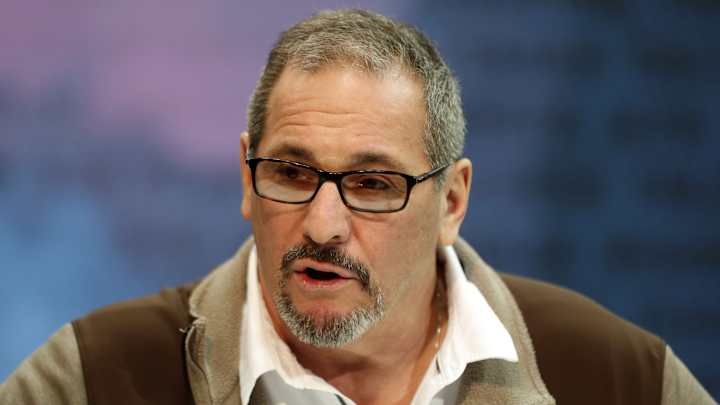How the Absence of the June 1 Designation Might Affect the Giants' Upcoming Salary Cap Decisions

It seemed just like yesterday, the NFL Management Council and the NFLPA finally agreed to a brand-new Collective Bargaining Agreement that would ensure peace on the NFL labor front for ten years.
But time does fly, and here we are, getting ready to enter the final year of that CBA as of March 18, the official start of the 2020 league year.
Although both sides have been in discussion now for months about a new CBA to ensure there is no labor stoppage, there still appears to be a ways to go before we know for sure if all or part of the 2021 season will be wiped out due to a labor dispute.
So in preparation for the final league year of the CBA, there are going to be some changes to how the salary cap is governed. Over the next several days, I’m going to look at some of these changes and attempt to reconcile how they might affect some business decisions facing the Giants moving forward.
Let’s start the focus with one of the most significant changes, the lack of the June 1 designation.
The June 1 designation allowed teams who were looking to unload large contracts with at least two or more years remaining to redistribute how the remaining prorated signing bonus affected the cap.
For example, if a player was cut with three years left and an annual prorated signing bonus of $1 million per year, his $3 million remaining prorated bonus would accelerate into the current year’s cap unless he was designated as a June 1 transaction.
In that case, his team would be charged $1 million of the prorated amount, with the remaining $2 million hitting the following year’s cap.
The drawback though is by designating a player as a June 1 transaction (there are two such designations allowed per team, per year) that cap savings wouldn’t be applied to the team’s books until--you guessed it--June 1.
The idea behind the deferring of the greater sum of the signing bonus was that with the cap expected to rise each year, teams would be in a better position to absorb the hit.
Also, teams would take this approach to ease up the cap liability on those contracts they lopped off the books that had two or more years remaining, the freed up money being used to sign its rookie draft class.
Because there technically is no “next year” in the eyes of the current CBA, teams can’t defer money. This is why all contracts that are terminated this year or which are traded (yes, even after June 1) will have the remaining prorated signing bonuses accelerate into the current year’s cap.
How This Rule Affects the Giants
If the Giants were looking to unload Nate Solder’s contract, they might want to wait not only to get a replacement on board but because of the cap ramifications.
Solder has two years remaining on his contract with a prorated signing bonus of $6.5 million per year, or $13 million total that would automatically be dumped into the team’s 2020 dead-money ledger.
From a cap perspective, this move would make no sense, considering the Giants would only save $6.5 million on the transaction.
Unless the Giants get a blue-chip stud at left tackle who is the second coming of Jonathan Ogden and is NFL ready, it would be a surprise if Solder is among the cap casualties.
The same principle holds true regarding receiver Golden Tate, who signed a four-year deal with the team last off-season and who is currently the fourth-highest cap figure on the Giants, behind Solder, guard Kevin Zeitler and linebacker Alec Ogletree.
Although Tate’s suspension last year is believed to void any guaranteed money he had coming to him (which helps the Giants if they were to seek a restructure), if the Giants were to move on from Tate this year, they’d only save $3.294 million while taking a $7.058 million dead money cap hit.
One might debate that Tate and Sterling Shepard are identical in terms of skill set, but as we have seen with Shepard, who had some concussion issues this year, Tate’s presence on the roster gives them depth that might make carrying his $10.352 million cap hit (roughly 5.4% of the team’s projected cap) worth it.
So Where Do the Giants Stand in Terms of Projected Cap Space?
According to Over the Cap, who is projecting a $200 million salary cap for 2020, the Giants, before any postseason accounting is completed, are projected to have $61,887,216 in cap space, a number that doesn't appear to include any postseason accounting such as incentives and rebates.
Regardless, the projected available space will not be a true $61.887 million worth of space for a few reasons.
As Gettleman noted in his press conference, he’ll need to hold about $20 million in reserve. That’s not just for potential renegotiations, though. That’s also to cover all incentives, including those unlikely to be earned under normal circumstances. This, again, is due to the end date on the current CBA changing the accounting rules for the final league year.
For example, if a player has a bonus in his contract for winning the Super Bowl, that bonus would need to be accounted for in the 2020 cap rather than be deferred to 2021 unless new CBA is reached ensuring the continuation of the LTBE/NLTBE payout schedule.
Gettleman will also need an estimated $13.09 million for the 2020 draft class, and that's an estimate that as of right now doesn't include the projected comp picks because we'll need to see where they end up being slotted assuming they're actually awarded.
So between these two numbers--the Giants’ projected cap space to use on free agents is closer to about $30 million.
Get in on our Friday Fan Day mailbag. Send your questions to nygiantsmaven@gmail.com.
I'll have more on the changes to the salary cap and accounting in the final league year in upcoming articles, as well as a future look at how the Giants can potentially clear around $20 million to help offset the projected $20 million Gettleman indicated he'd need to hold back.
